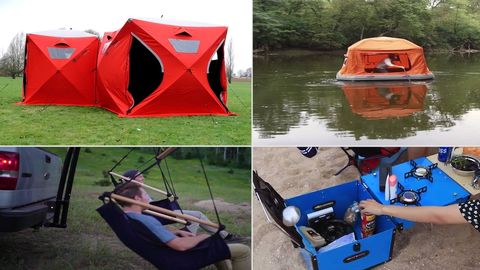- This year saw its fair share of superconductor hype, and one of the most controversial papers—originally published in the prestigious journal Nature—has finally been retracted.
- The original paper reported that a material, dubbed “red matter,” was a room temperature superconductor at 10,000 atmospheric pressure. But the work was immediately scrutinized by scientists.
- After a months-long investigation and eight of the 11 original authors requesting a retraction, the journal retracted the article this week.
Room temperature superconductors are the “holy grail” of material science. A metalloid or complex oxide ceramic that experiences no electrical resistance at ambient temperatures could bring about a revolution in fusion technology, electric utilities, medical imaging, transportation, and even more futuristic applications that engineers haven’t even dreamt up yet. It’d be one of the biggest discoveries in science history—not to mention an all-but-guaranteed Nobel Prize.
Maybe this explains why so many are rushing to find this wonder material—and some are tripping along the perilous path to scientific glory. In 2023, two superconductor claims grabbed headlines. The biggest arrived in July, when South Korean scientists published a preprint stating the discovery of a room temperature superconductor named LK-99. Despite immense global hubbub, the meticulous work of scientists around the world confirmed that LK-99 was not, in fact, a room temperature superconductor.
But this erroneous study was actually preceded by a group from the University of Rochester reporting the existence of a different room temperature superconductor (albeit one that only functioned as such under 10,000 atmospheres of pressure). And unlike the South Korean claim, this wasn’t a non-peer reviewed print—it was a legitimate article in the journal Nature. Big, if true.
More From Popular Mechanics

Spoilers it wasn’t.
The results of the study were scrutinized almost immediately, and efforts to replicate this material—which has been referred to as “red matter”—ultimately failed. In September, eight of the 11 original authors called for a retraction, fearing that data in the paper misrepresented the actual findings. At the time, Nature’s chief physical sciences editor told The New York Times that “we are currently carefully investigating concerns related to the reliability of the data in this paper. We can also confirm that we are in correspondence with the authors regarding all concerns.”
Last Tuesday, Nature followed through with that retraction. The retraction note reads, in part:
[Co-authors] have expressed the view as researchers who contributed to the work that the published paper does not accurately reflect the provenance of the investigated materials, the experimental measurements undertaken and the data-processing protocols applied… In addition, and separately, concerns have been independently raised with the journal regarding the reliability of the electrical resistance data presented in the paper. An investigation by the journal and post-publication review have concluded that these concerns are credible, substantial and remain unresolved
This latest development is yet another blow to the study’s lead researcher, Ranga Dias. Dias is also under scrutiny for other scientific malpractices, including allegedly plagiarizing parts of his Ph.D thesis. He has yet to respond to this latest retraction.
While the search for a room temperature superconductor continues, materials scientists continue to push the boundaries of what we are capable of creating. Hopefully, one day, one of these approaches will prove scientifically sound, and researchers will uncover the room temperature superconductor that the world has been eagerly been awaiting.
Darren lives in Portland, has a cat, and writes/edits about sci-fi and how our world works. You can find his previous stuff at Gizmodo and Paste if you look hard enough.
